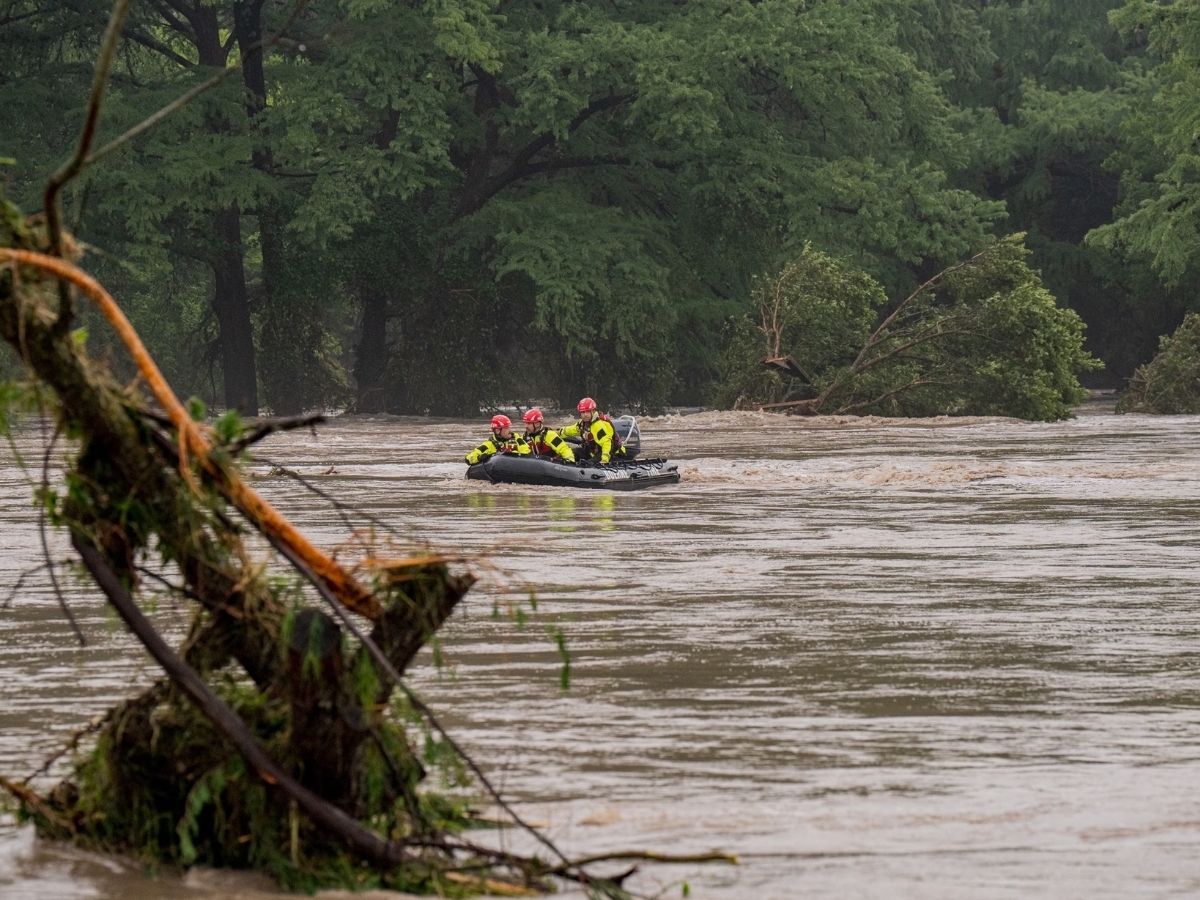Texas has long topped the list for flood-related deaths in the US, with the state alone accounting for 1,069 of the 5,724 flood deaths in Lower 48 — 370 more than Louisiana, the next highest — between 1959 and 2019, The Associated Press reported, citing a 2021 study published in the journal Water.
From deadly floods in Central Texas to recent events in San Antonio, where 13 people reportedly lost their lives , with 11 of them trying to drive through floodwaters, the danger appears far from over. Here are some possible factors that make the US state an unfortunate leader in flood-related deaths.
Geography, Size and Population All Play a Role
What makes Texas so flood-prone could be attributed to a mix of factors, including the state’s geography, climate and human behaviour of its residents.
“Steep, hilly terrain produces rapid runoff and quick stream rises, since the water will travel downhill at greater speed into rivers and over land,” Kate Abshire, head of NOAA’s flash flood services, recently told The Associated Press.
The region often referred to as “flash flood alley” in Central Texas comprises rugged hills, rocky terrain and clay soils, which don’t absorb water well. What exacerbates it is the huge amount of moisture from the nearby Gulf of Mexico, paving way for frequent, fast-moving floods.
“You’ve got the Gulf of Mexico right there, the largest body of hot water in the entire North Atlantic most of the time,” the US-based news agency quoted Jeff Masters, former NOAA meteorologist, as saying.
ALSO READ: Explained: What Trump’s Threat of 30% Tariffs on the EU and Mexico Means for Global Trade
Were Flood Deaths in Texas Preventable?
Experts studying the recent developments in the flood-ravaged US state found that most such deaths were avoidable. Hatim Sharif, the Water study author and a professor at the University of Texas at San Antonio, found that 86% of US flood deaths since 1959 involved people walking or driving into floodwaters.
“People in Texas, they like trucks and SUVs, especially trucks,” Sharif said, according to the AP. “They think trucks are tough… They underestimate the depth and velocity of water.”
According to the report, the state has over 3,000 spots where roads cross waterways without bridges or culverts, making them particularly dangerous during storms.
Abshire pointed out that many people ignore the warning, “Turn around, don’t drown,” and even drive around barricades. That behaviour, experts say, costs lives, especially at night, given more than half of flood deaths are reported to have happened after dark, when visibility and reaction times are reduced.
Emergency Systems Could Save Lives
Sharif further told the publication that better technology and response systems could help save lives during floods. “If they had an integrated warning system that uses rainfall forecasts to forecast real-time impacts on the ground, that could have saved many lives,” he reportedly said, while referring to the recent floods in Kerr County.
These tools, he insisted, could tell first responders which roads are impassable and where flooding is most dangerous.
Risk Factors and Demographics
The study also found that men account for about 62% of flood deaths. “Risk-taking behaviour is usually associated with men,” a trend that is also seen in car crash statistics, the AP quoted Sharif as saying.
The July 4 floods in the Texas Hill Country , the report said, were less typical, with most of the victims in a campsite overtaken by water.






